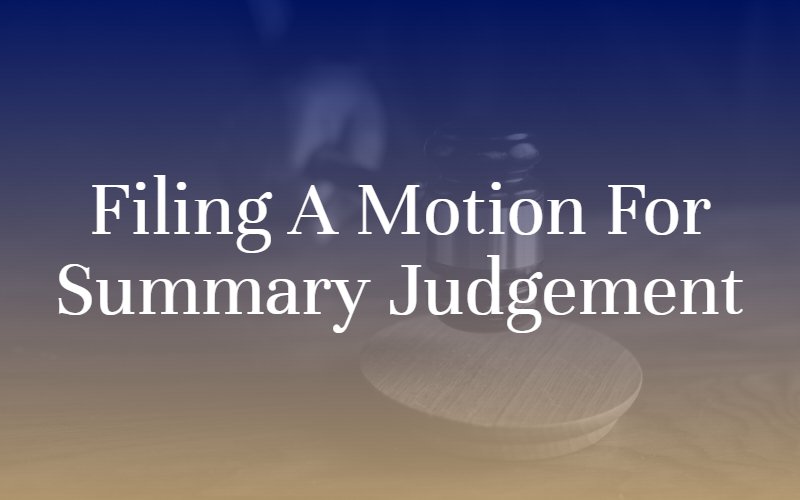
What Is Summary Judgment?
Colburn Law
Posted in Personal Injury on March 12, 2022
When a personal injury lawsuit goes to trial, it is clear that the plaintiff and the defendant are on opposing sides. While the plaintiff is fighting to prove the defendant’s negligence, the defendant is attempting to avoid liability for the plaintiff’s injuries.
In some cases, a plaintiff and a defendant agree on the important facts of a case. In these situations, either party could request a motion for summary judgment. This motion essentially ends a civil lawsuit before it reaches the courtroom.
The Parts of a Summary Judgment Motion
A motion for summary judgment requests that a court make a decision on all or part of a civil lawsuit before it reaches trial. As a result, both parties can save money and avoid time-consuming courtroom processes.
Either party can file this type of motion; but in many cases, this responsibility lies with the plaintiff and his or her attorney. For a motion for summary judgment to be successful, the parties who file must prove the following facts.
- There are no material facts that another party could reasonably dispute.
- As a result of the undisputed facts, the party who filed the motion, also known as the movant, is entitled to summary judgment.
Three Parts of Summary Judgement
- First, the movant and his or her attorney will present a version of the facts with evidence, such as witness statements, photographs, and affidavits from expert witnesses.
- Second, the movant’s attorney will write a memorandum that discusses the relevant laws and statutes that apply to the case. This memorandum is intended to convince the judge that the movant should win the case.
- Third, the movant and his or her attorney will anticipate what the defendant intends to argue and write any counterarguments. This part of the motion intends to show that the movant will win the case, even if the other party’s arguments are true.
Filing a Motion for Summary Judgment

After the movant files a motion for summary judgment, the other party will have an option to respond. The other party can attempt to prove that the movant’s arguments are incorrect or supply more evidence about his or her version of events. The other party can also choose not to respond to the motion.
Next, the judge will review all of the paperwork and supporting evidence. He or she will either grant or deny the motion, depending on whether the movant’s arguments were correct and whether he or she will win the case.
If the judge grants a motion for summary judgment, the case will conclude without the need for a costly trial. If the judge denies the request, the case will likely proceed to trial.
Speak to an Attorney About Your Legal Claim
If you plan on filing a personal lawsuit, you need an attorney on your side. Filing a motion for summary judgment is only of the steps that may occur during your claim. It is important to have an advocate on your side who has the knowledge and experience necessary to guide you through the litigation process.
By hiring a lawyer to represent your claim, you can prepare for each stage and receive important advice to help you navigate a complex lawsuit. As soon as possible following your accident, contact a Washington personal injury attorney to discuss your next steps.



